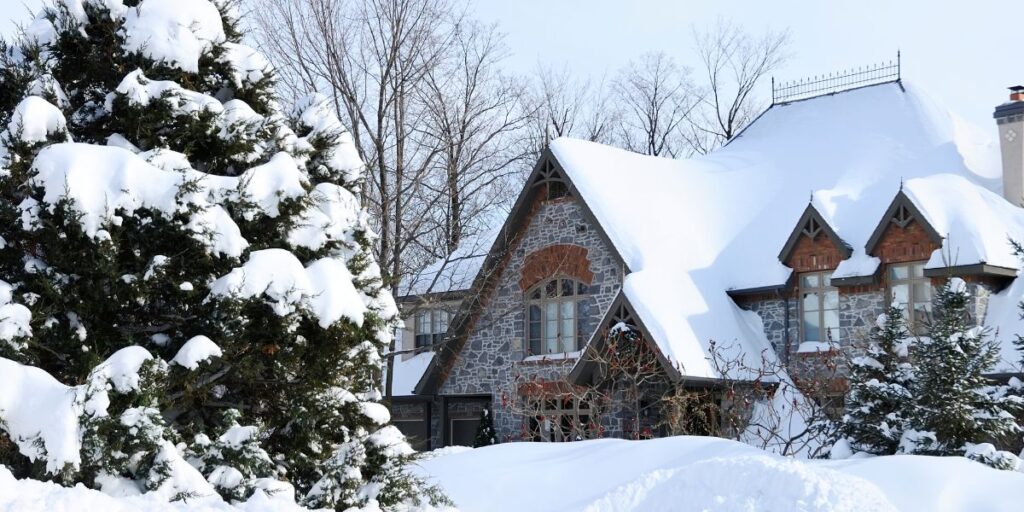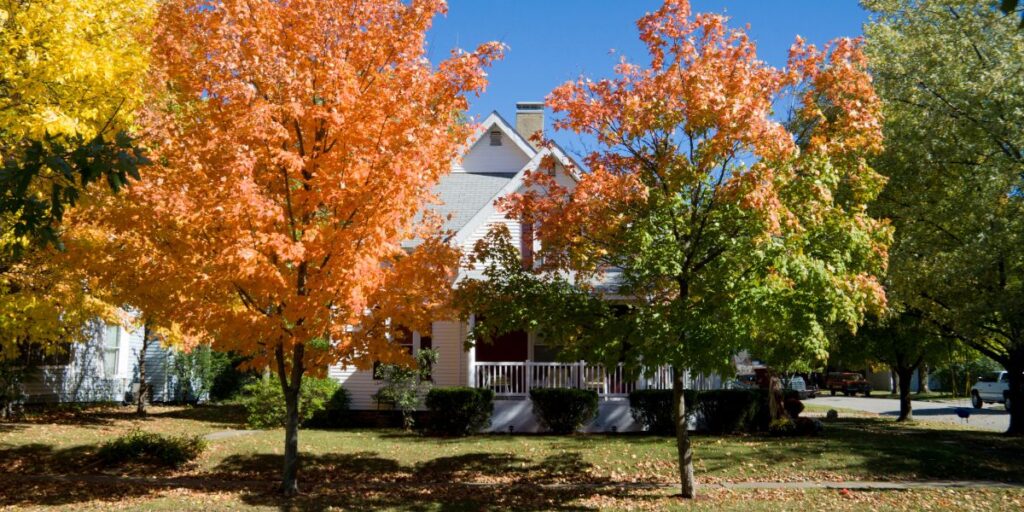
It’s the holiday season, your home is decorated inside and out, you have plans with family and friends, and the winter weather makes that cup of hot chocolate feel extra special. As wonderful as this time of year is, it comes with stress. Guests, events, shopping, and even decorating can take its toll on you.
Do you know who else can be stressed during this season? Your trees. Yes, the holidays can put stress on your trees as well. From ice and snow to being weighed down with lights to road salt, your trees are feeling the stress of the holidays just like you are.
Here’s how to care for your trees so they can also be merry and bright:
#1: Protect your tree from road salt
Road salt is a necessity in winter, but it can also be harmful to your tree if it gets into the soil near the tree roots. Road salt can cause soil contamination, water stress, leaf and bud damage, and root damage.
The holidays bring increased traffic into neighborhoods and even your driveway, where your guests will park. You may have to shovel your driveway or sidewalks (often covered in road salt) and the salty snow can end up on your tree roots without you knowing.
To protect your trees, try shoveling your snow into piles that are further away from your trees. Also consider where your guests need to park and try to clear the snow away for them ahead of time, so your trees have as much distance as possible from salty snow spray.
You can also insulate your trees by mulching them, which provides a protective layer to keep the roots warm and moist and creates more of a barrier between the road salt and your tree roots.
#2: Christmas lights
One of the greatest joys this time of year is to drive down snow-lined streets looking at sparkling light displays in people’s front yards. When choosing lights for your outdoor trees, make sure you use outdoor-rated lights. These lights are created for outdoor weather conditions like snow, rain, and extreme cold.
LED lights are a good option for your trees as they stay cool to the touch and are significantly more energy efficient. They are less of a fire hazard and therefore safer for your trees. Inspect your lights before you put them on the tree, checking for frayed or damaged wires, broken bulbs, and faulty lights.
Use only outdoor extension cords rated for outdoor use, and make sure all your cord connections are tight.
Attach your lights firmly to the tree with hooks or clips instead of staples or nails that can be damaging to the lights and the tree.
#3: Extra traffic
The holidays come with a lot of traffic, extra vehicles parked in your driveway or on the street, carolers, guests, or kids playing in the snow, your trees will not be left to themselves.
Keep your trees safer by clearing and marking out pathways for your guests to walk on. Maintain sidewalks clear from snow and ice so your guests don’t go trampling through your yard. Give instructions to guests on where to park and help spot them if they need to park near your trees.
The most wonderful time of year should be enjoyed by everyone, including your trees. Take care of them during this holiday season, and they will return the gift by blooming healthy and strong in the spring.
From everyone at Advanced Tree Care: Happy holidays!
Need expert advice on protecting your trees during the holiday season? We can help. Advanced Tree Care combines top-notch equipment, cutting-edge technology, and well-trained staff to provide emergency tree removal and tree maintenance services. With a presence in nine counties and two states, we work daily to provide unparalleled customer service, safety, and efficiency—as well as the expertise to beautify your landscaping and community. Advanced Tree Care isn’t just our name—it’s also our purpose!



